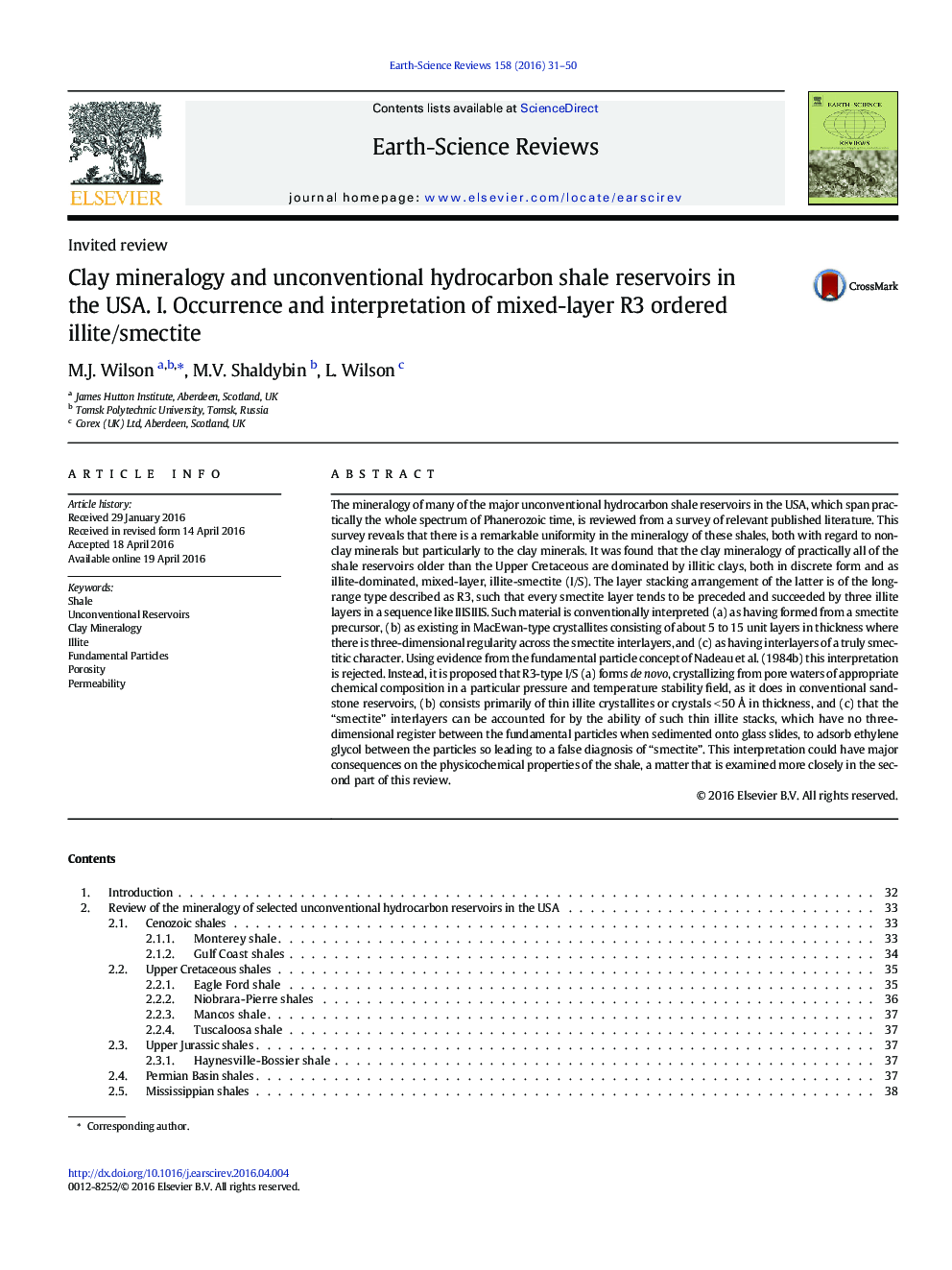| کد مقاله | کد نشریه | سال انتشار | مقاله انگلیسی | نسخه تمام متن |
|---|---|---|---|---|
| 6442829 | 1639944 | 2016 | 20 صفحه PDF | دانلود رایگان |

The mineralogy of many of the major unconventional hydrocarbon shale reservoirs in the USA, which span practically the whole spectrum of Phanerozoic time, is reviewed from a survey of relevant published literature. This survey reveals that there is a remarkable uniformity in the mineralogy of these shales, both with regard to non-clay minerals but particularly to the clay minerals. It was found that the clay mineralogy of practically all of the shale reservoirs older than the Upper Cretaceous are dominated by illitic clays, both in discrete form and as illite-dominated, mixed-layer, illite-smectite (I/S). The layer stacking arrangement of the latter is of the long-range type described as R3, such that every smectite layer tends to be preceded and succeeded by three illite layers in a sequence like IIISIIIS. Such material is conventionally interpreted (a) as having formed from a smectite precursor, (b) as existing in MacEwan-type crystallites consisting of about 5 to 15 unit layers in thickness where there is three-dimensional regularity across the smectite interlayers, and (c) as having interlayers of a truly smectitic character. Using evidence from the fundamental particle concept of Nadeau et al. (1984b) this interpretation is rejected. Instead, it is proposed that R3-type I/S (a) forms de novo, crystallizing from pore waters of appropriate chemical composition in a particular pressure and temperature stability field, as it does in conventional sandstone reservoirs, (b) consists primarily of thin illite crystallites or crystals <Â 50Â Ã in thickness, and (c) that the “smectite” interlayers can be accounted for by the ability of such thin illite stacks, which have no three-dimensional register between the fundamental particles when sedimented onto glass slides, to adsorb ethylene glycol between the particles so leading to a false diagnosis of “smectite”. This interpretation could have major consequences on the physicochemical properties of the shale, a matter that is examined more closely in the second part of this review.
Journal: Earth-Science Reviews - Volume 158, July 2016, Pages 31-50